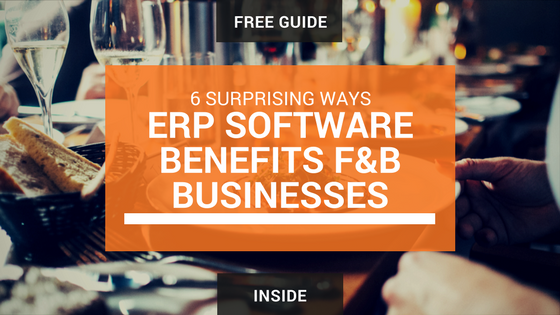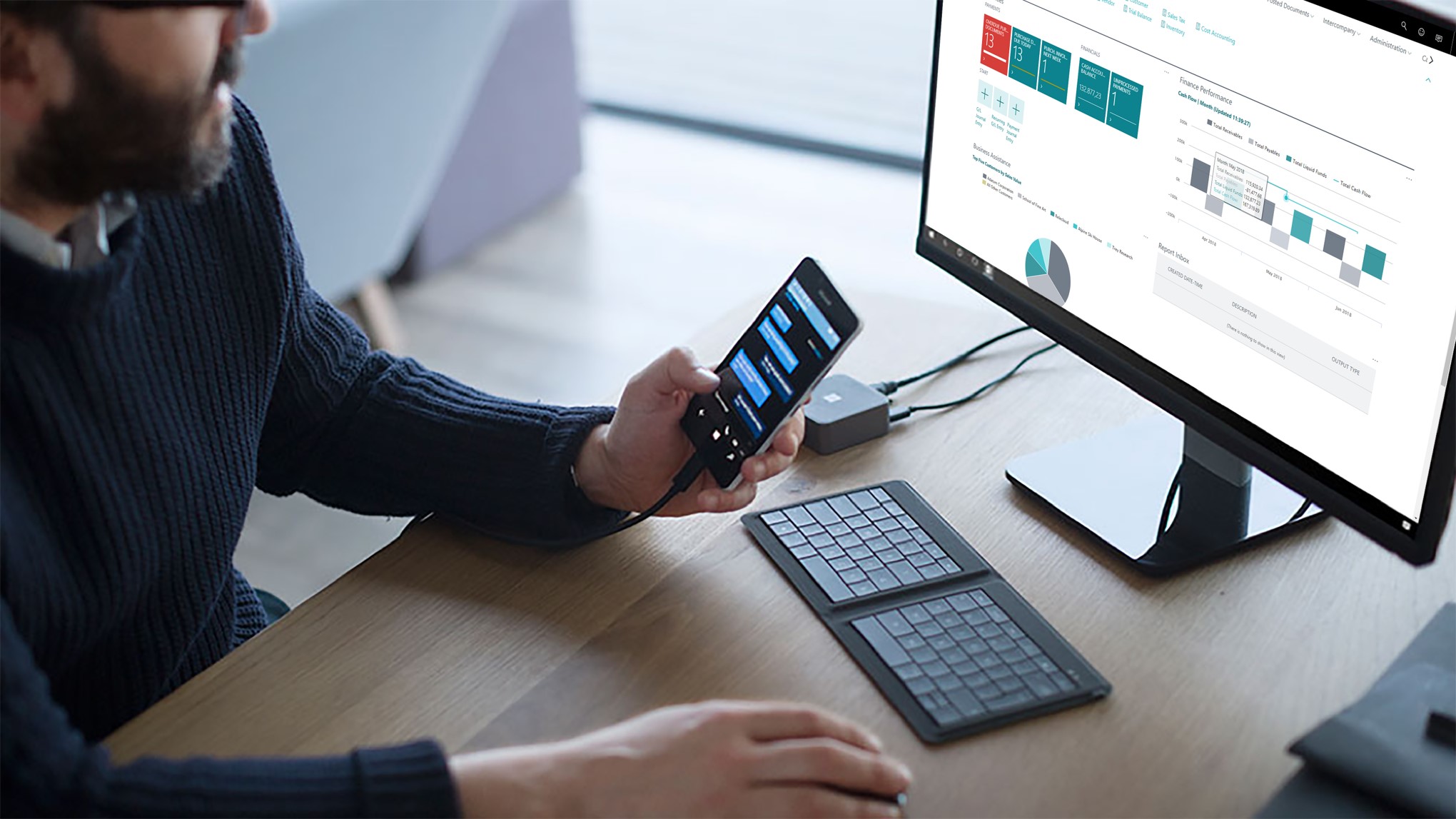Approximately 125 to 160 billion pounds of perfectly edible food gets wasted every year. throughout the supply chain process, due to various reasons such as bad weather, processing issues, excess production, market changes, poor planning, and more.
Even poor labeling can lead to a lot of food wastage. This incurs steep costs to the global economy and the F&B businesses involved in the production and distribution of food.
It’s also trickier for businesses in the F&B industry to manage their inventory, due to the nature of their products. This is because food products are perishable and can quickly become unusable if not consumed on time.
There are also several constraints on the storage and safe transportation of food products, making careful and efficient handling necessary to minimise food wasteage throughout the supply chain.
Therefore, F&B businesses like yours requires a solution that can help optimise the inventory management of your food products, such as an ERP software.
6 Tips For Managing Your Food Inventory
Here are 6 tips for helping you manage the food inventory of your F&B business more effectively:
1. Conduct Audits On Food Wasteage

Whether you’ve yet to implement an inventory management solution, or are already using one such as a ERP software, it’s always a good idea to start by evaluating your current status when it comes to food wasteage.
Find out how much food is being wasted throughout your processes, and keep a log of data that helps you identify the core issues and root causes behind this wasteage.
2. Integrate Your POS System With Your Back-end

The next step is to choose a solution that can automate the tracking of your inventory levels.
To do this, you can integrate your Point-of-Sale- (POS) system - such as ePOS or a digital - with a compatible ERP software such as Microsoft Dynamics 365 Business Central.
Alternatively, you can connect your ERP with a digital POS solution such as Red Dot Payment, to get the same real-time insights that you would with a traditional POS solution in a cloud environment.
Such an integration ensures that you get real-time updates on sales at all of your customer-facing retail outlets and shorefronts, which helps you quickly identify both your best-selling products and what's not performing well in your inventory.
This lets you monitor all your customer-facing interactions and sales in real-time, allowing you to quickly identify which are your best-selling products, and what’s not performing well.
With this information, you can make essential decisions about continuing a product, discontinuing it, or providing deals and bundled offers as per your customers’ preferences, and better your chances of increasing your sales.
3. Monitor Your Inventory In Real-Time
Inventory Management & MRP in SAP Business One; Source: SAP Business One
Food products are often highly perishable and come with a limited shelf life. Hence, it is essential to keep an eye on products that might have to go off the shelf as soon as possible or else be deemed wasteful.
The sale of food items could also vary a lot depending on the location, climate, seasonal availability, and so on. Hence, you must continually monitor your stocks in real-time, especially when there is a huge demand for your products.
Real-time monitoring can be made possible with the help of automated inventory management systems that can provide you with regular reports, alerts, and notifications as and when required.
For instance, you can get alerts when the stocks go below a threshold value or when the demand surges above a threshold value.
You need to be able to coordinate your stock procurement to the current demand levels. So, make use of inventory forecasting features to help you keep a good level of stock that can meet any fluctuations in demand.
4. Follow The FEFO Method
%20(1).jpg?width=1000&name=ello-AEU9UZstCfs-unsplash%20(1)%20(1).jpg)
To minimise the spoilage of your food products, you should follow the First Expired, First Out (FEFO) method that prioritises the sale of food products that are nearing their expiry dates.
To do this effectively, you’ll need to organise your storage area so that the food products closest to their expiry dates are also the most accessible, to ensure they’re the first items picked to fulfill any customer orders that come in for said products.
By applying FEFO to your storage processes, you will minimise spoilage of food products in your inventory, and increases your inventory turnover rate.
5. Provide Training In Food Inventory Management

Even if you already have a solution implemented to optimise your food inventory management, it's only effective if the end user has sufficient training to make use of it.
And a one-off training sessions to familiarise end users with the solution isn't sufficient. According to Ebbinghaus' forgetting curve, participants in a training session forget 80% of what they've learned after a couple of days.
Therefore, you'd need to send your end users for several refresher courses to ensure that they retain their knowledge of how to use the software you've implemented for managing your business's food inventory.
6. Use Demand Forecasting To Inform Future Orders

By studying your inventory for a designated time period, you can find out which of your food products are more in demand, and which ingredients were over-utilised in that time because of this demand.
Conversely, you can also learn which food products are not so popular, leading to under-utilisation of the ingredients needed to manufacture them.
With this information, you'll be able to carry out inventory forecasting for various ingredients, and make informed ordering decisions in the future.
The insights gleaned from your POS system and your inventory management system can also help you understand and predict trends in customer demand over any given period of time.
This can help you make more optimal purchasing decisions when it comes to ingredients for the food products of your F&B business.
How Can ERP Software Optimise Your Food Inventory Management?

An ERP software with a robust inventory management module – such as SAP Business One – helps improve supply chain operations, and ensures optimised food storage, inventory management, shelf life monitoring, and distribution of perishable goods.
Take A Look At Some Of The Reasons SAP Business One Is An Ideal Solution For Your F&B Business
They offer huge advantages over traditional methods of managing food product inventory by allowing you to monitor the status of your food products in real-time, and therefore minimise any wasteage.
For example, with the real-time insights derived from your ERP software, you can conduct clearance sales as and when necessary to clear your stocks of food products nearing their expiry date, and thus avoid food wasteage from having to dispose of unsold items.
You can also use these insights to inform your scheduling of food product deliveries, with the nature and shelf life of the food items being transported being taken into account.
An ERP software also consolidates the enormous amounts of data generated by your business processes, and generates reports which provides the meaningful insights your F&B business needs to further improve your supply chain management.
For instance, the availability of seasonal food products can be predicted in advance. You can also ensure that you have allocated the necessary resources to handle any surge in demand or supply in an efficient manner.
Here are some of the major benefits that an ERP software can offer to your business in the F&B industry:
- It helps you simplify inventory tracking and helps with improved shelf-life management
- Improves the efficiency of logistics and overall productivity
- Helps meet compliance regulations and ensure proper food quality
- Gives you advanced reporting and analytical functions so that you can base your business decisions on real-world data rather than guesstimates
Optimise Your Food Inventory Management To Reduce Food Wasteage

There’s a delicate balance of demand and supply, when it comes to managing food inventory for your F&B business.
Being unable to forecast demand levels could cause either overproduction of lack of inventory for your food products, which could have a severe impact to the profitability of your systems.
Solutions that can help you optimise your food inventory management, such as the inventory module in an ERP software, gives you the insight you need to gain control over your inventory and ensure you’re equipped to deal with market fluctuations gracefully, and with the least food wasteage possible.
To that effect, we highly recommend SAP Business One, thanks to the robust inventory management module that has the features and functionalities you need to manage the food inventory in your F&B business. To find out how else the ERP software can benefit your business, click the image below.




